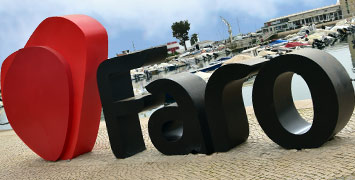Algarve-Tourist.com
The best independent guide to the Algarve
Algarve-Tourist.com
The best independent guide to the Algarve
The Capela dos Ossos (Bone Chapel) and Igreja do Carmo, Faro
The Capela dos Ossos in Faro is a macabre chapel located to the rear of the beautiful Igreja do Carmo church.
The chapel serves as the final resting place for over 1,250 skeletons, with bones filling every available surface. Not only are the skeletons stored here, they also form the chapel’s artistic medium, with skulls and bones carefully positioned to form intricate geometric patterns across the walls and ceiling.
These bones belonged to Carmelite monks who once served at the Carmo church, their remains transferred here in 1816 when Faro's cemeteries reached capacity. Today, hundreds of hollow eye sockets gaze upon visitors from every angle, making the Capela dos Ossos one of Faro's most profound and unsettling historical sites.
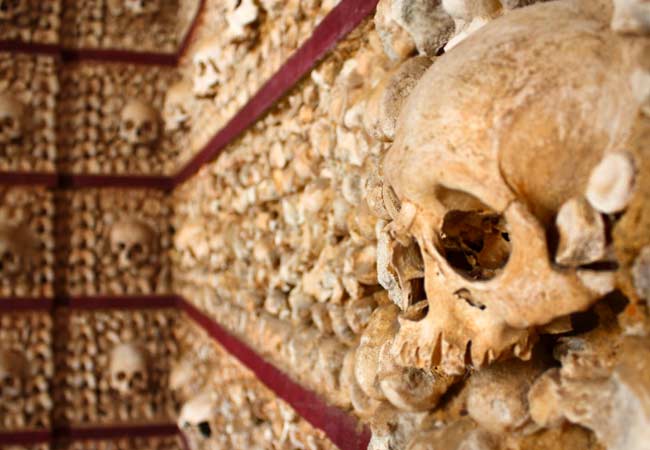
Skulls form the decoration within the Capela dos Ossos
The Igreja do Carmo is equally interesting, featuring an imposing baroque façade and a cooling interior with intricately carved altars. The Capela dos Ossos and Igreja do Carmo combine to form one of the best tourist attractions of Faro, and worthy of the short walk from the city centre.
This article will provide an image tour of the church and chapel, followed by tourist information.
Related articles: Faro intro - Sights of Faro
Tourist information for the Chapel of Bones, Faro
The Capela dos Ossos is situated in the rear courtyard of the Igreja do Carmo and is entered through the main church. As the access to the chapel is via the church, it means that the opening hours are limited by mass and service times.
The Bone Chapel is open Monday to Friday 10:00-13:00 and 15:00-17:30, on Saturday it is only open 10:00-13:00 and the chapel is closed all day Sunday. The entrance fee is €2.00, and a typical visit lasts around 20 minutes. During the summer the Capela dos Ossos will have a steady flow of tourists and can get quite busy.
The Igreja do Carmo is to the north of Faro, and is a 7-minute walk from the harbour and Jardim Manuel Bivar. The exact GPS coordinates for the Igreja do Carmo are GPS: 37.01997, -7.93471 (link to google maps).
Insight: There is a second much larger bone chapel in the town of Evora, and a guide to it can be read here.
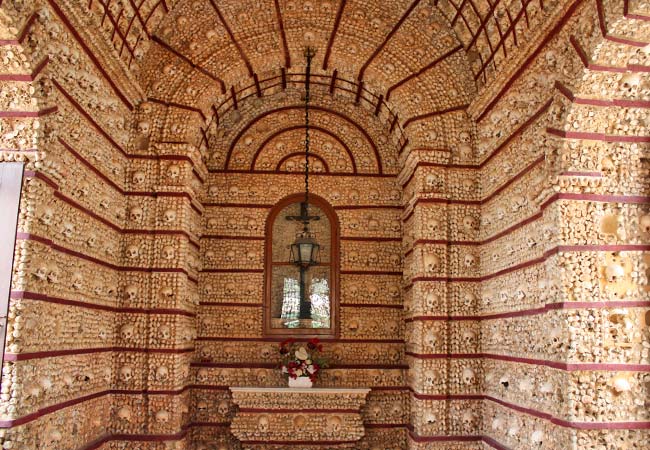
An Image tour of the Igreja do Carmo and the Capela dos Ossos
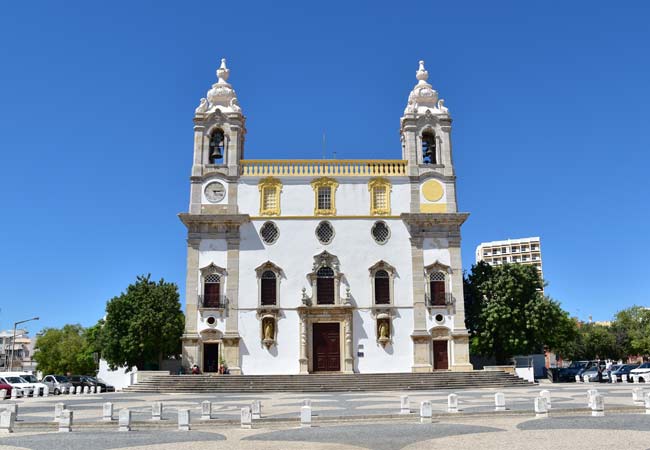
The Igreja do Carmo is a twin bell tower church, which follows the 18th-century Baroque style of architecture. The church was originally constructed in 1719 but was severely damaged by the 1755 earthquake.
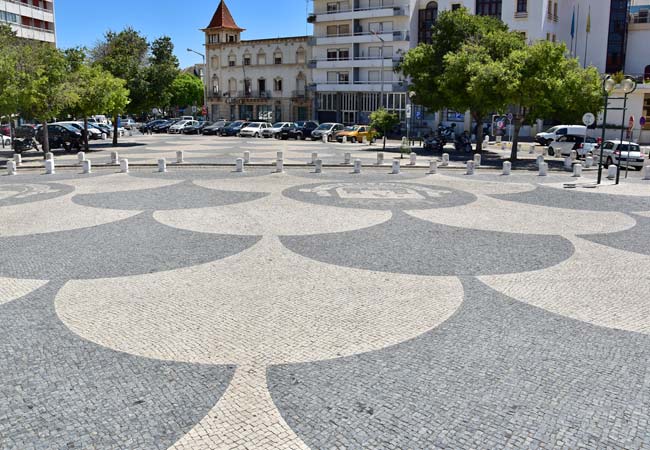
The church overlooks the Largo do Carmo (Carmo Square), with its distinctive calçada stone pathing.
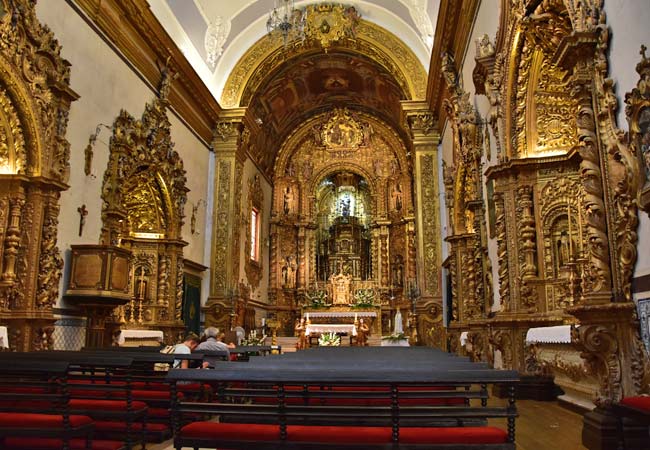
The interior of the Igreja do Carmo is lavished with gold leaf and intricately carved altars. The church was funded by the wealth, particularly gold, imported from Brazil.
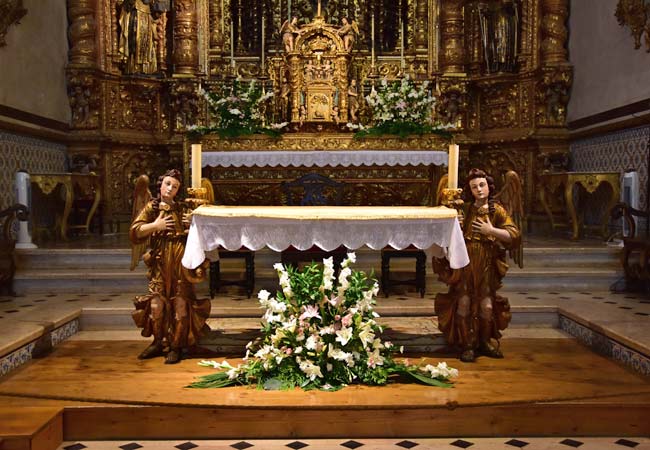
The altar in the Igreja do Carmo
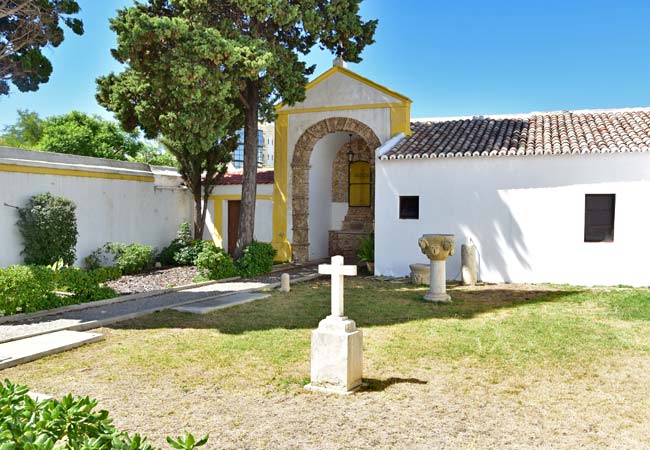
After paying the entrance fee and passing through the sacristy, you'll enter the courtyard to the rear of the church. This was originally the graveyard where the bones were exhumed from.
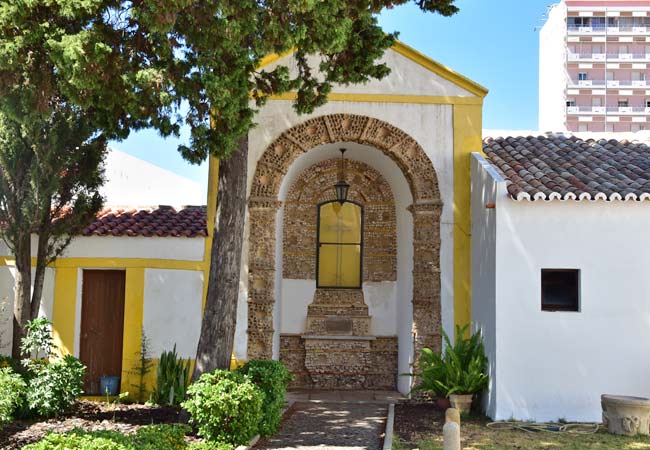
There is an exterior bone altar, but unfortunately, all of the skulls and bones are badly damaged.
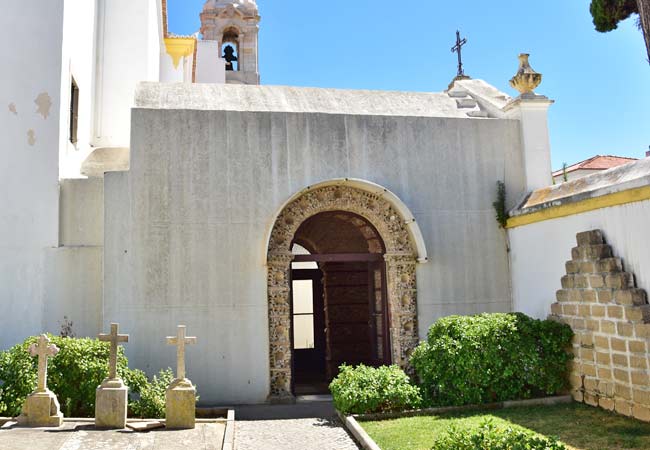
The Capela dos Ossos is housed in a small, whitewashed extension to the main church.
The inscription above the entrance to the chapel reads:
“Pára aqui a considerar que a este estado hás-de chegar”
“Stop here and consider, that you will reach this state too”
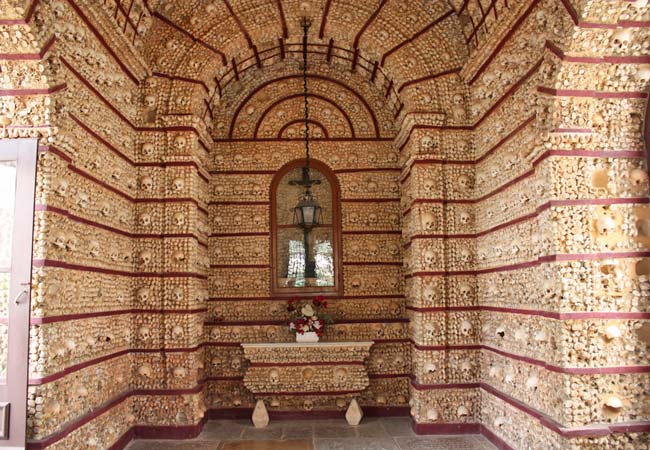
The Capela dos Ossos is tiny, at only 2x4meters, but still contains 1,245 skulls
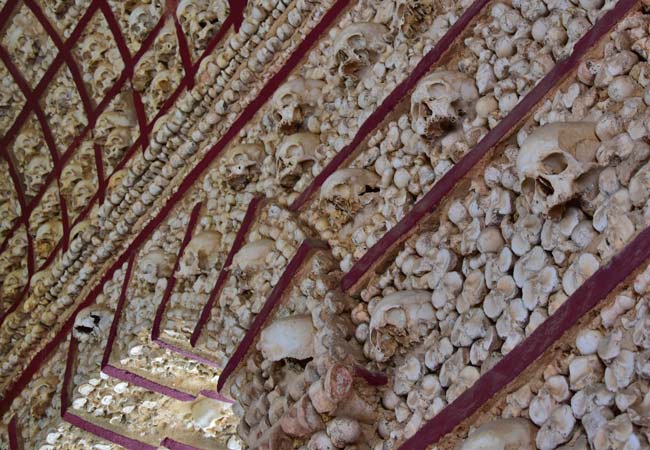
The bones and skulls line every surface of the chapel including the arched roof and pillars
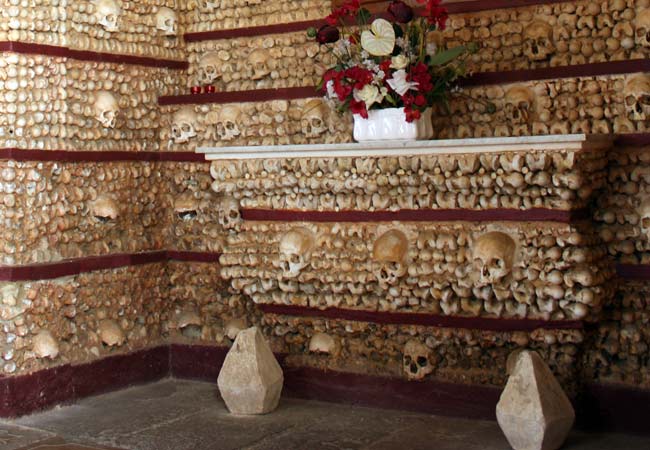
Bones even form the altar.
If you decide to take photos within the Capela dos Ossos, please be respectful of those who rest here.
Further information about the Capela dos Ossos
While the bone chapel may seem like a very creepy attraction for visitors today, exhuming bones from graves was a common practice in the past. This was often a necessity due to limited suitable space for burial, and after a period of ten years, the bones would be exhumed and placed in tombs.
The macabre atmosphere of the chapel is often lessened by the sound of children playing in the church's creche and nursery, which is located directly behind the chapel.
The bones lining the chapel walls belonged to monks from the Carmelite order, who worshipped at the Igreja do Carmo (Carmo is Portuguese for Carmel).
Our most popular guides for Faro and the Algarve
All of our guides to the Algarve





















